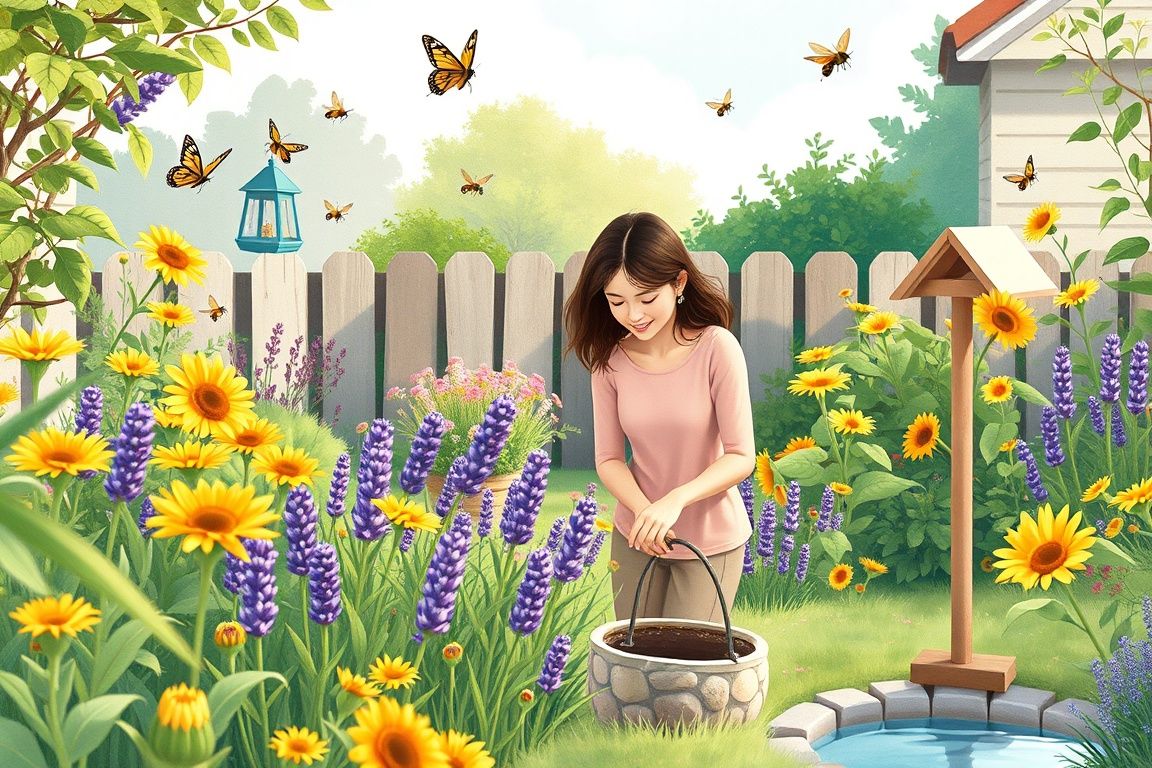Creating Pollinator-Friendly Gardens
Why It’s Worth It
Create a vibrant garden that attracts beneficial pollinators, enhancing biodiversity and ecological health.
Learn practical strategies for selecting the right plants and creating habitats that support local wildlife.
Experience the joy and satisfaction of nurturing a sustainable environment that contributes positively to your community.
Your Learning Roadmap
Introduction to Pollinator-Friendly Gardens
This module provides an overview of pollinator-friendly gardens, explaining what they are, why they matter, and how they contribute to a healthy ecosystem. Participants will learn foundational concepts essential for understanding the rest of the course. The content highlights the benefits to both nature and food production while setting clear objectives for creating a sustainable garden. Understanding Pollinator-Friendly Gardening Ecological Importance of Pollinators Benefits of Creating a Pollinator Habitat
Understanding Pollinator Needs and Behaviors
This module focuses on the life cycles, behaviors, and ecological requirements of pollinators such as bees, butterflies, and other insects. Participants will understand the specific conditions pollinators require, which informs plant choice and garden layout. The module builds on scientific research and insights from influential texts to deliver practical strategies tailored for attracting and supporting these species. Pollinator Behavior and Foraging Patterns Social vs. Solitary Pollinators Climatic Influences on Pollinator Activity
Selecting and Planting Nectar-Rich Plants
This module covers the criteria for selecting the right plants to support pollinator health. It emphasizes the value of nectar-rich and native species while discussing the pros and cons of exotic options. By drawing on frameworks from well-known gardening literature, participants will be guided through garden planning and planting techniques that maximize ecological benefits. Native vs. Non-Native Plants Identifying Nectar-Rich Species Design and Planting Strategies
Creating Suitable Habitats for Pollinators
This module focuses on the physical aspects of garden design that encourage pollinator habitation. Learners will examine how to create natural nesting areas, water sources, and shelter within their gardens. Drawing from ecological principles and case studies in popular gardening books, the lesson emphasizes practical and sustainable habitat enhancement. Providing Nesting Sites Designing Water and Shelter Features Integrating Habitat Features into Garden Layout
Enhancing Garden Biodiversity and Ecosystem Services
This module emphasizes the importance of a diverse garden ecosystem beyond just pollinators. Participants will explore strategies to integrate multiple species, promote beneficial insects, and balance plant communities. The teachings, inspired by contemporary ecological frameworks from popular texts, allow learners to build a resilient garden that supports a range of ecosystem services. Creating a Multi-Layered Garden Integrating Beneficial Insects Using Ecological Pest Management
Sustainable Garden Maintenance and Adaptive Management
This module covers the long-term practices required to maintain a pollinator-friendly garden. Participants will learn how to monitor garden health, adjust practices seasonally, and manage resources sustainably. The content emphasizes the importance of adaptive management for enduring garden success, drawing on both modern principles and insights from influential gardening texts. Seasonal Maintenance Practices Monitoring Pollinator Activity Adapting to Environmental Changes
What Users Are Saying
All You Need to Know
Join the Pollinator Cause!
Interactive chat-based learning for real-time engagement.
Flexible learning at your own pace and schedule.
Practical applications with instant feedback.
Access to comprehensive modules covering key topics.
Personalized advice to create your ideal garden.
Emphasis on fostering a balanced ecosystem.

